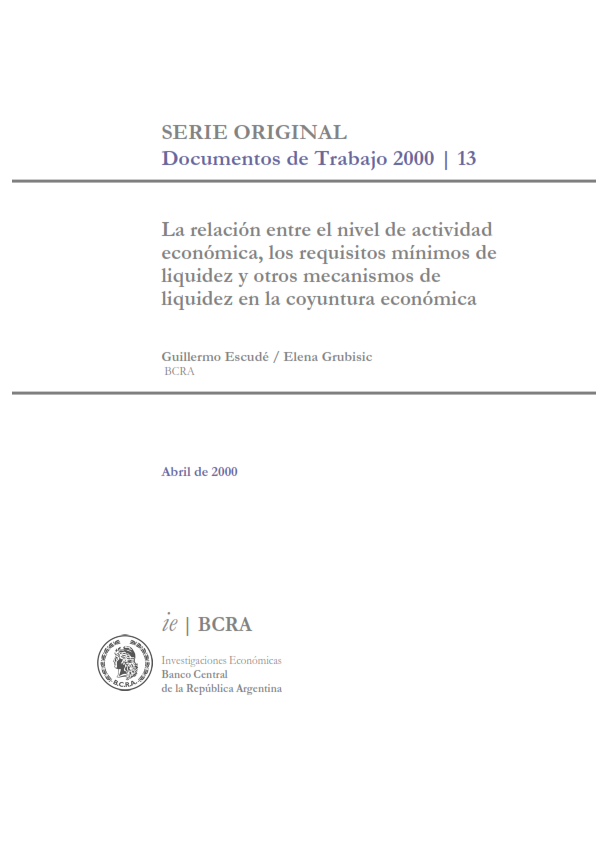The relationship between the level of economic activity, minimum liquidity requirements and other liquidity mechanisms in the economic situation
Working papers (original series) | 2000 | N 13
Keywords:
Minimum liquidity, Activity, Macroeconomic models, ArgentinaAbstract
This work attempts to clarify the relationship between minimum liquidity requirements, other liquidity mechanisms and the level of economic activity through the use of a simple macroeconomic model designed for this purpose. It is inspired by a model by Bernanke and Blinder (1988), adapting it, however, to a small and open economy. The essence of the Bernanke and Blinder model consists of modifying one of the fundamental assumptions of the traditional IS-LM model: the one that says that bank loans and marketable financial assets (“bonds”) are perfect substitutes. There is plenty of evidence that they are neither for banks nor for borrowers. This is based on the fact that 1) an important part of the mass of debtors in the financial system (which we can generically call SMEs) does not have financing through the capital market as an alternative and 2) for banks this segment typically implies greater risk of non-compliance despite the greater diversification it potentially allows to generate. Therefore, the banking sector must be explicitly modeled.


